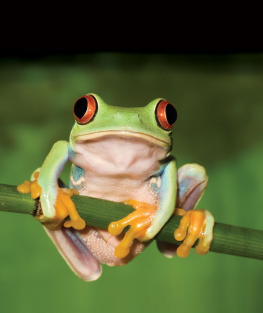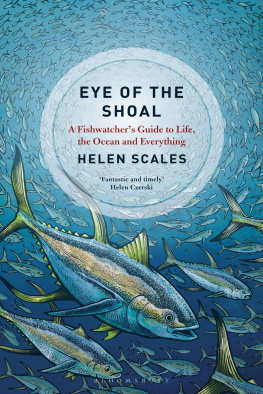Scales
by Jennifer Boothroyd
Scales are pieces of hard
skin on the outside of an
animals body.
Many animals have scales.
Fish have scales.
Reptiles have scales.
Snakes are reptiles.
Lizards are reptiles.
Many reptiles live in hot
places.
Their scales keep them from
drying out.
Snakes shed their old skin
and scales.
Some scales are thick and
rough.
Others are shiny and soft.
Many scales are flat and
smooth.
Scales protect animals.
Spiky scales keep away
hunting animals.
Scales help animals hide.
Scales help animals survive
in their surroundings.
Inside Out
Snakes need to shed their old scales and skin. A snake will scratch its head on something hard. The old skin peels back over its head. The snake scrapes and slithers until all the old skin comes off. It takes about two weeks for a snake to shed its skin.
Old skin peels back
Snake slithers out of skin
Skin peels off for two weeks
Facts about Scales
People can tell the age of some fish by looking at their scales.
Scales are made of keratin. Human fingernails are made of the same material.
Snakes do not have eyelids. Clear scales cover their eyes.
Sharks have very tightly connected scales. Shark skin looks smooth. It feels rough like sandpaper.
Crocodiles have thick, hard scales called scutes.
Dry, thick scales are at the end of a rattlesnakes tail. They make a rattling sound.
A pangolin is an unusual mammal. (A mammal has hair and drinks its mothers milk. ) A pangolins body
is covered with thin keratin scales. It is the only mammal with these scales.
Glossary
protect to keep safe
reptiles cold-bloodedanimals that crawl or slither
scales hard skin on ananimals body
shed to lose or fall off
survive to keep living
Index
fish
lizards
protect
reptiles
shed
snakes
survive
Copyright 2012 by Lerner Publishing Group, Inc.
All rights reserved. International copyright secured. No part of this book may be reproduced,
stored in a retrieval system, or transmitted in any form or by any meanselectronic, mechanical,
photocopying, recording, or otherwisewithout the prior written permission of Lerner Publishing
Group, Inc., except for the inclusion of brief quotations in an acknowledged review.
The images in this book are used with the permission of: Patricio Robles Gil/Minden Pictures,
p. 2; Jeff Hunter/Photographers Choice/Getty Images, p. 3; Michael Gray/Dreamstime.com,
p. 4; Tier Und Naturfotografie J & C Sohns/Workbook Stock/Getty Images, pp. 5, 22 (second
from top); Pete Oxford/Minden Pictures, pp. 6, 22 (third from top); Alexander Safonov/
Flickr/Getty Images, p. 7; Poco_bw/Dreamstime.com, p. 8; Uryandrikov Sergey/Shutterstock
Images, p. 9; Michael & Patricia Fogden/Minden Pictures, pp. 10, 22 (fourth from top);
Heidi & Hans-Juergen Koch/Minden Pictures, p. 11; Freedomman/Dreamstime.com,
p. 12; Norman Price/Alamy, p. 13; imagebroker.net/SuperStock, pp. 14, 22 (top); Joe
McDonald/Visuals Unlimited, Inc., p. 15; Brandon Cole, p. 16; David Fleetham/Visuals
Unlimited, Inc., pp. 17, 22 (bottom); John Cancalosi/Alamy, p. 19 (top); age fotostock/
SuperStock, p. 19 (middle); Animals Animals/SuperStock, p. 19 (bottom).
Front Cover: Nata-Lia/Shutterstock Images (background); Tischenko Irina/Shutterstock
Images (goldfish).
Main body text set in ITC Avant Garde Gothic 21/25. Typeface provided by Adobe Systems.
Lerner Publications Company










































